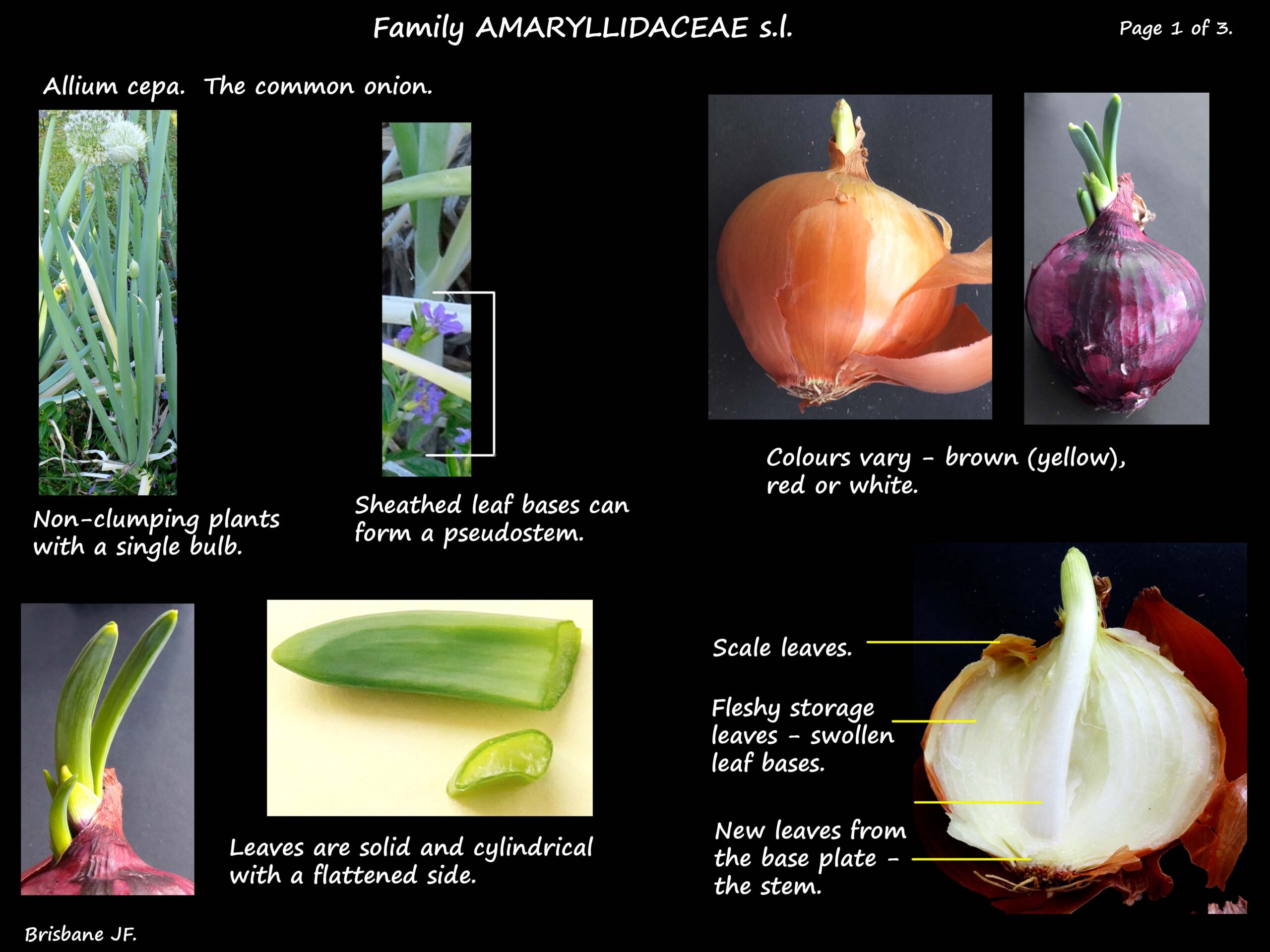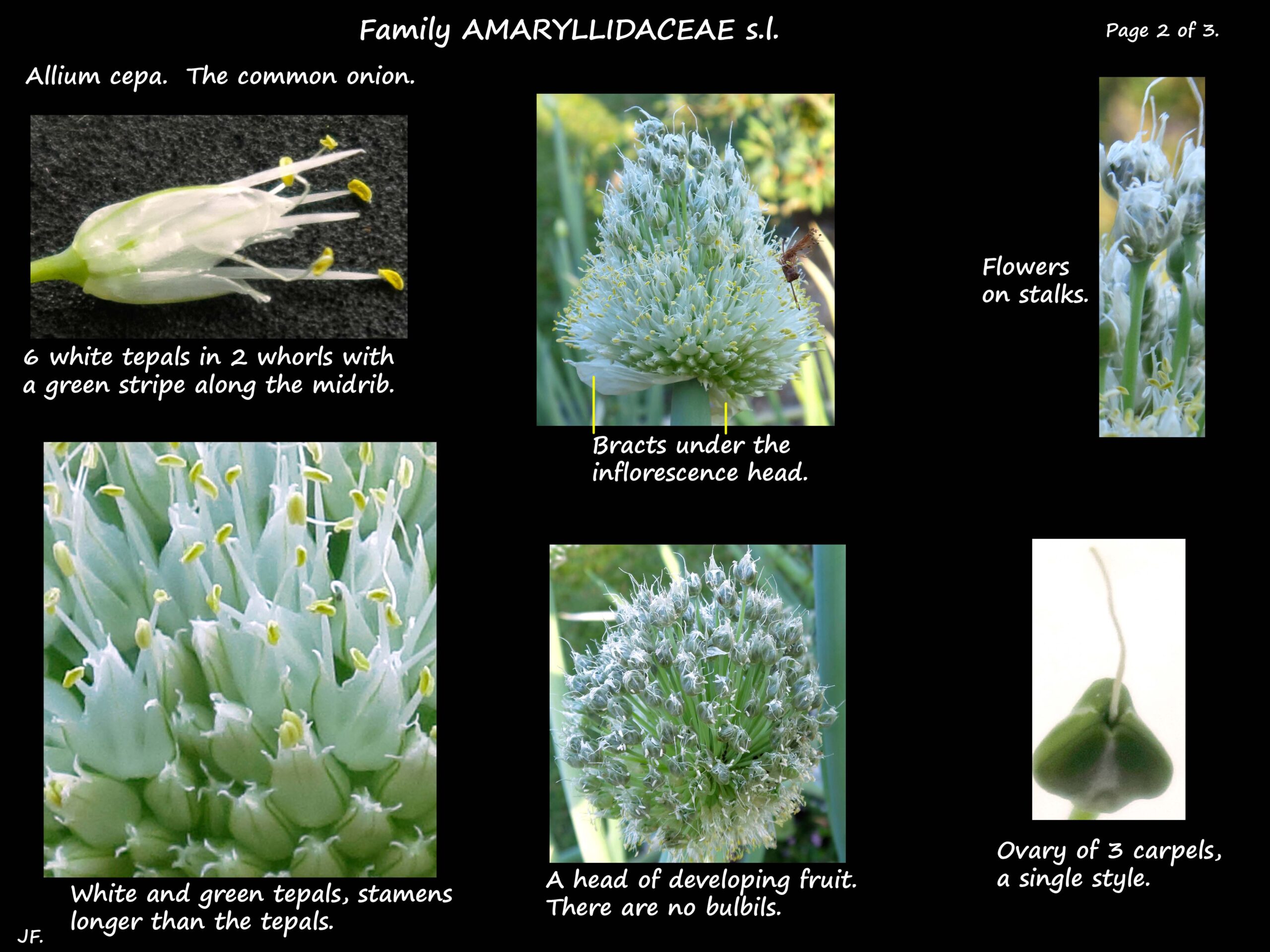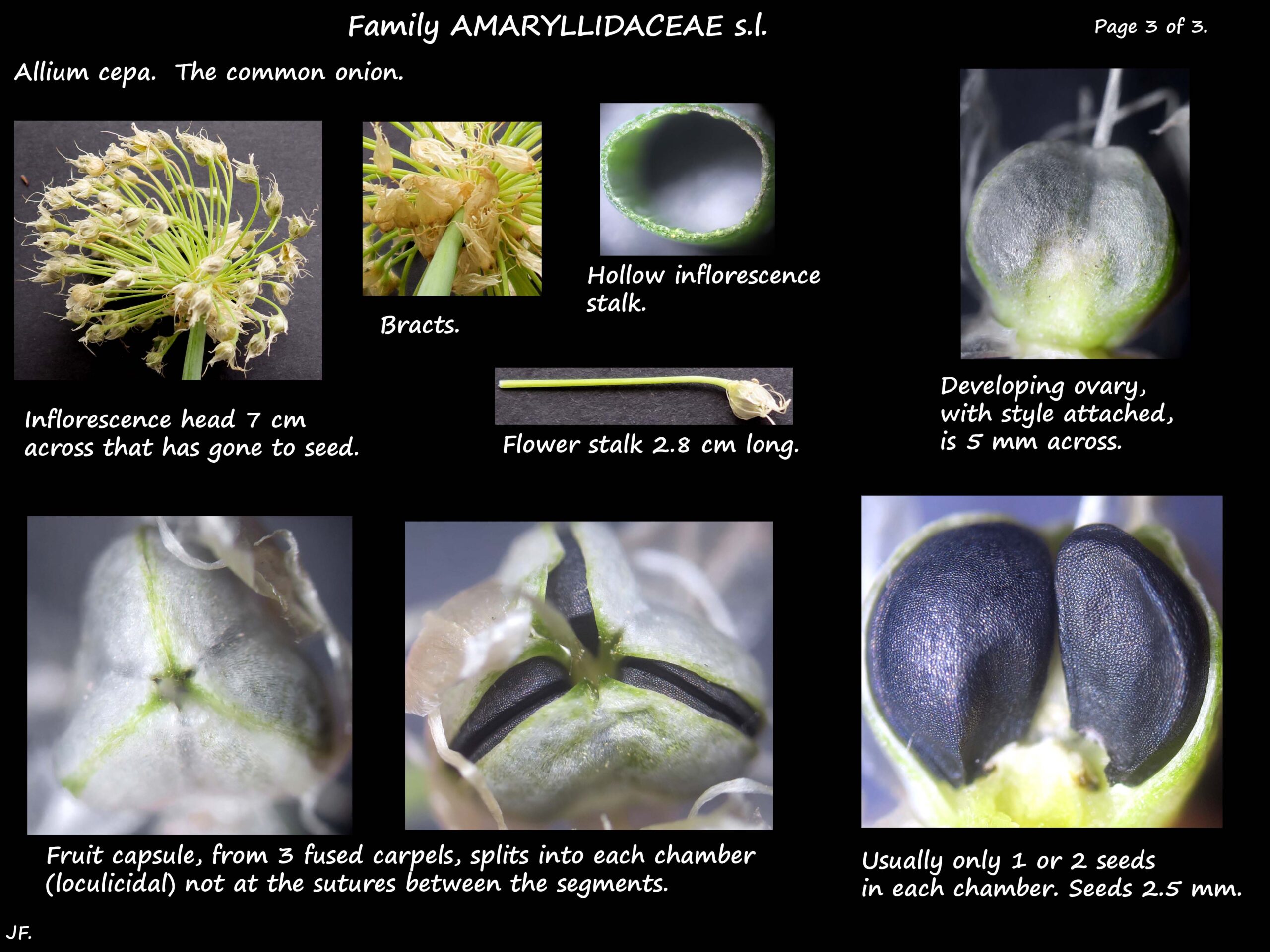Allium cepa. Common onion.
Family Amaryllidaceae s.l.
Grown as an annual the plants can be nearly 0.5 m tall.
The stem is a flat, underground disc or base plate.
The fibrous roots, leaves and inflorescences grow from this.
Leaves, to 40 cm long, can appear to arise at ground level or their flattened,
overlapping bases can form a short above ground pseudostem.
The lower part of the leaves are swollen forming the bulk of the bulb.
Bulbs can be up to 10 cm across and store water and some nutrients.
The rest of the green or blue-green leaf is hollow and tubular with a flattened side.
When the plant is mature the outer storage leaves become thin and papery to protect the bulb.
The leafless inflorescence stalk or scape grows from the base plate.
They are hollow, cylindrical and up to 1.8 m high.
One or more bracts protect the flower buds at the top.
The flowers form a spherical head.
They are star-shaped and white with a green vein or with some pink.
Some form small bulbils in the flower head.
The ovary is superior and the 6 stamens are inserted onto the tepals.
The fruit are loculicidal capsules with shiny black seeds.
There are many varieties and cultivars divided into 3 groups:
Cepa group.
Most cultivars are in this group – Allium cepa var. cepa.
They grow as large, single bulbs and have no bulbils in the inflorescence.
The common white, brown and red onions are in this group.
Onions can be harvested before thay are mature.
Spring onions are picked before the bulb forms.
(These can also be grown from Allium fistulosum whose leaves do not have a flat side.)
Aggregatum group.
These cultivars – A. cepa var. aggregatum – produce lateral bulbs but do
not have bulbils in the flower heads.
Best known are the shallots which form clumps and are harvested when the bulb is still small.
Proliferum group have single bulbs and develop bulbils in the inflorescence.
J.F.




